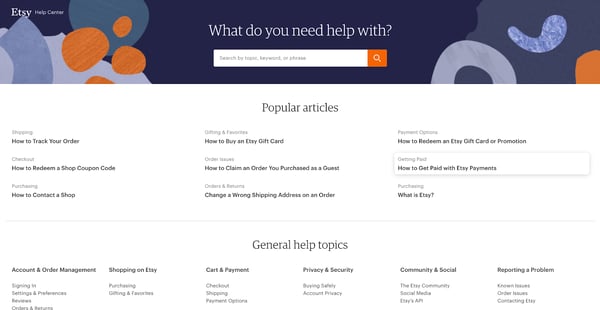What is Content Marketing and how does it drive sales?

Content marketing tells the story of your brand to your audience. For example, the Lego Movie was a hugely successful piece of content marketing.
Lego told a creative story featuring their toys, with a strong appeal to both adults and children. They understood their market and how to reach them.
Much more than entertainment, the film was part of an innovative content marketing strategy which led to a considerable increase in sales.
Lego’s profits rose by 14% in 2015, with a 25% increase in sales of their toys.
So, what is content marketing?
Content marketing is all about your audience. Forget your products, services and brand. Focus on the people you are trying to reach.
Content marketing is an inbound marketing strategy that creates a narrative for content to connect with audiences.
Content marketing relies on valuable, relevant and consistent content to attract, engage and delight customers. This includes educational resources, articles, videos, entertainment and webinars that answer specific questions customers have.
Why is it important?
Content marketing can boost factors like brand awareness, sales, reach, interactions and loyalty between customers and brand.
Content can:
• Educate prospects and leads about the products and services you offer
• Boost conversions
• Build relationships between customers and business to increase loyalty
• Show prospects how your products solve their issues
• Create a community around your brand
• Drive traffic
• Increase sales
Types of Content Marketing
Content marketing is used at each stage of the marketing funnel, from awareness to evaluation to conversion.
The content needs to be relevant, engaging and targeted specifically to cold, warm or
hot traffic. Content can be created across blogs, videos, podcasts, social media, and more.

Content that drives awareness
The goals of awareness stage content are to increase applause rate, impressions, traffic,
time commitment, audience retention rate, brand and offer awareness, and to build retargeting lists. Types of content for awareness include blogs, podcasts, video, and social updates.
Content that generates leads
Content that generates leads comes in two forms: lead magnets and events. Lead
magnets are an irresistible bribe that gives specific value to a prospect in exchange for their contact details. This is valuable because it generates more qualified leads, which are more likely to continue down the funnel and make a purchase. Lead magnets include ebooks, white papers, cheat sheets, mind maps, webinars, templates and tools. Events are great for generating qualified leads because you are asking them to commit their time to attend, whether it’s live or digital.

Content that sells
Content that sells is content that helps the prospect make an informed buying decision.
You reassure the prospect that they are making the right decision, to reduce ‘buyer’s remorse’. Anticipate the intent of the prospects and build content to meet that. Overcome objections and obstacles and answer their questions before they ask.
Types of content that sell include customer stories, product comparisons, product demos and trials.
Content that increases retention and loyalty
Content that increases customer retention and loyalty aims to onboard and indoctrinate
the customer.
Tell your brand’s story, share customer stories, case studies, and testimonials to
further indoctrinate customers into your brand.
Content to increase loyalty includes reviews, referrals, behind the scenes, email sequences, videos and podcasts.
Aim to inspire, celebrate, be vulnerable, share failures, or take a stand to build up the image of your brand.
Also help people to onboard with your products, through offering technical support, answering FAQs, providing a ‘help desk’, or offering demo videos.
This will help reduce friction with your customers when using your product or service for the first time and so increase their satisfaction and convince them to return to you next time.
How does content marketing drive sales?
Content marketing builds strong relationships with customers as they progress through the sales funnel, and so, drives sales. Content creates value for the customer to influence their decision.
The content marketing formula is: content creates value, which creates audience, which leads to advertising, then awareness, then sales.
Content marketing formula: content -> value -> audience -> advertising -> awareness -> sales
So, the final goal of content marketing is to make the sale.
From creating awareness, generating leads, to consideration, to conversion. Content creates highly qualified leads, which are more likely to make a purchase.
Content marketing is also always linked back to revenue and cost to make it a viable venture for the business. Business owners are only interested in ROI and revenue, so content marketers have to convince them that their content is effective at driving sales.
The success of content can be measured through traffic, engagement, click rate and conversion rate analytics.
As we saw before with Lego, their content dramatically increased sales.
How do I start creating content?
So, now that you know the basics of content marketing, it’s time to start writing!
But first, you need to establish a content marketing strategy.
Here’s our seven simple steps to start creating content:
1. Define your goal
2. Choose your buyer persona
3. Run an audit of current content
4. Choose a content management system
5. Brainstorm ideas
6. Determine types of content to create
7. Publish
Margin Media Content Case Study
Here's some happy customers who we've helped with their content marketing.
AAA Backstage - Australian Music Blog
What we delivered:
- Content marketing
- Wordpress content management system
- Blog
- SEO
- Responsive design
- Custom page design
Looking to create an effective content marketing strategy for your business?
First, you need to get the fundamentals right. Margin Media can help!
Download our free Fundamentals of Content Marketing eBook for all the tools to get started on your content journey.





